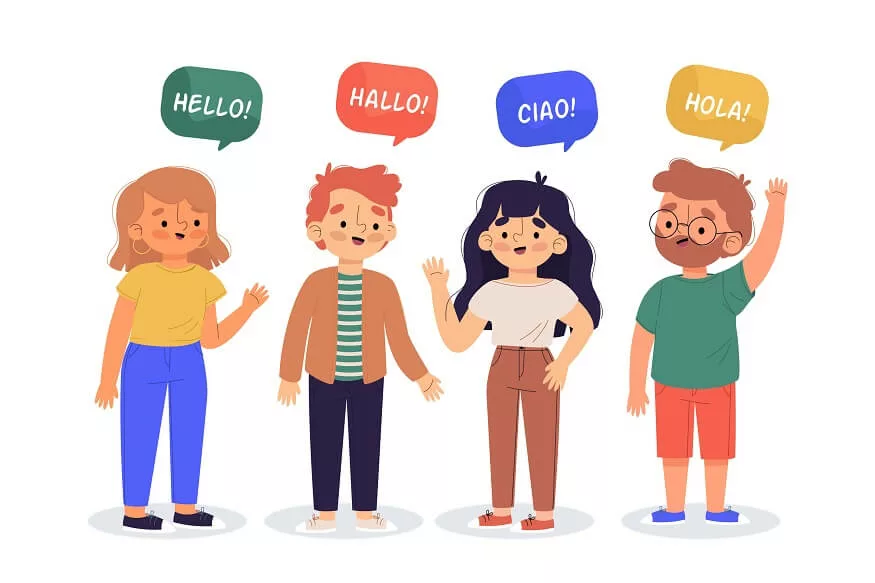Teaching foreign languages to children not only opens doors to diverse cultures but also enhances cognitive abilities and fosters a global perspective. This linguistic journey is a harmonious blend of creativity, adaptability, and effective strategies that bridge the gap between familiarity and the unknown. In this article, we delve into the art of teaching foreign languages to children, unraveling techniques, approaches, and methods for success.
Choosing the Right Language
- Relevance and Practicality: The first strategic step in teaching foreign languages to children is selecting a language that is relevant and practical. Consider languages with global importance or those spoken in the child’s local community. Mandarin, Spanish, French, and German are often popular choices.
- Cultural Connection: Opt for a language that offers a cultural connection. Children are more likely to engage and find joy in learning a language when they can connect it to stories, traditions, and celebrations of a particular culture.
- Interest and Passion: Take into account the child’s interest and passion. If a child is fascinated by a particular country or has a family background with a specific language, incorporating that language into the curriculum can spark enthusiasm.
Interactive Learning
- Language Games: Integrate language learning into games. Whether it’s traditional board games adapted for language learning or interactive digital games, turning the process into play makes it enjoyable and engaging for children.
- Storytelling Sessions: Storytelling is a powerful tool for language acquisition. Incorporate stories, fables, and folktales in the target language. This not only enhances vocabulary but also introduces cultural nuances in a captivating way.
- Role-Playing Activities: Create role-playing scenarios where children can use the language in context. This can include playing shopkeepers, doctors, or even characters from stories. Such activities make language learning dynamic and practical.
Also Read: Impact Of Technology on English Language Evolution
Visual Aids and Multimedia
- Flashcards and Visuals: Utilise flashcards with images to associate words with visuals. This method enhances vocabulary retention and provides a visual reference for children to grasp the meaning of words.
- Multimedia Resources: Leverage multimedia resources like videos, songs, and interactive apps. Visual and auditory stimuli enhance comprehension and pronunciation. Platforms like YouTube, Duolingo for Kids, or language-specific educational apps offer engaging content.
- Cultural Videos and Shows: Introduce children to culturally relevant videos and shows in the target language. Animated shows, documentaries, or educational content can be both entertaining and educational, offering a window into the language’s cultural context.
Incorporating Technology
- Online Language Classes: Enroll children in online language classes. Platforms like Rosetta Stone, Babbel, or dedicated language learning apps offer structured lessons tailored to children, providing interactive exercises and assessments.
- Virtual Reality (VR): Explore virtual reality experiences that simulate immersion in a language. VR platforms can transport children to virtual environments where they interact with native speakers, fostering a more immersive and natural learning experience.
- Language Learning Apps: Incorporate language learning apps specifically designed for children. Apps like Gus on the Go, LingoKids, or Bilingual Child offer interactive games, songs, and lessons tailored to young learners.
Also Read: The Importance of Language Arts for Children’s Development
Music and Rhymes
- Singing in the Target Language: Music is a powerful mnemonic device. Introduce children to songs in the target language. Singing along not only improves pronunciation but also enhances rhythm and intonation.
- Rhyming Games: Explore rhyming games and activities. Rhymes are not only fun but also aid in phonetic development. Creating rhyming songs or games reinforces language patterns and improves auditory discrimination.
- Musical Instruments: Incorporate musical instruments. Learning to play simple instruments along with songs in the target language adds a hands-on element to the learning process, making it enjoyable and memorable.
Cultural Celebrations
- Cultural Events and Celebrations: Align language lessons with cultural events and celebrations. This can include teaching specific phrases or words related to festivals, holidays, or ceremonies, offering children insights into cultural traditions.
- Cooking and Language Fusion: Integrate language learning with cooking sessions. Choose recipes from the culture associated with the language and involve children in the preparation process while incorporating relevant vocabulary.
- Festive Crafts: Engage in festive crafts related to the target culture. Creating crafts associated with cultural symbols or events not only enhances language learning but also introduces children to diverse artistic expressions.
Total Physical Response (TPR)
- Action-Based Commands: Use Total Physical Response (TPR) by associating actions with commands. For example, when teaching the command “stand up,” incorporate the physical action of standing. This multisensory approach enhances comprehension.
- Movement and Language: Integrate movement into language learning. Activities like dance, yoga, or simple exercises can be accompanied by instructions in the target language, making learning a dynamic and physically engaging experience.
- Language through Play: Design language-based games that involve physical movement. Whether it’s a scavenger hunt or a treasure hunt with language clues, incorporating movement into language activities enhances retention and application.
Also Read: 5 love languages of kids every parent should know and how to act upon it
Story Building and Language Play
- Group Story Building: Encourage group story building where each child contributes a sentence or phrase in the target language. This collaborative approach not only enhances language skills but also fosters creativity and teamwork.
- Language Playtime: Dedicate specific playtime to the target language. This could include playing with language-themed puzzles, word-building games, or interactive storytelling sessions where children actively participate in creating narratives.
- Drama and Skits: Organise small skits or drama sessions in the target language. This not only improves language skills but also boosts confidence as children embody characters and express themselves in the foreign language.
Consistency and Routine
- Regular Language Time: Establish a consistent routine for language learning. Designate specific times for language lessons, creating a structured and predictable environment that facilitates focused learning.
- Daily Language Practices: Encourage daily language practices. This can be as simple as incorporating the target language into morning routines, greetings, or conversations about daily activities, embedding language learning into everyday life.
- Language Journaling: Encourage children to maintain a simple journal where they jot down new words, phrases, or expressions they learn each day. This habit reinforces retention and serves as a personal reference.
Celebrating Progress
- Language Milestones: Celebrate language milestones. Acknowledge and reward progress, whether it’s mastering a set of new words, achieving conversational milestones, or participating confidently in language-based activities.
- Showcasing Achievements: Provide opportunities for children to showcase their language achievements. Whether through small presentations, plays, or demonstrations, allowing them to demonstrate their language skills boosts confidence and motivation.
Also Read: What are the 5 Typеs of Language Skills?
As educators and parents, our role is not only to impart linguistic skills but to foster a love for languages as gateways to diverse cultures. For more such articles, refer to EuroSchool blogs.










